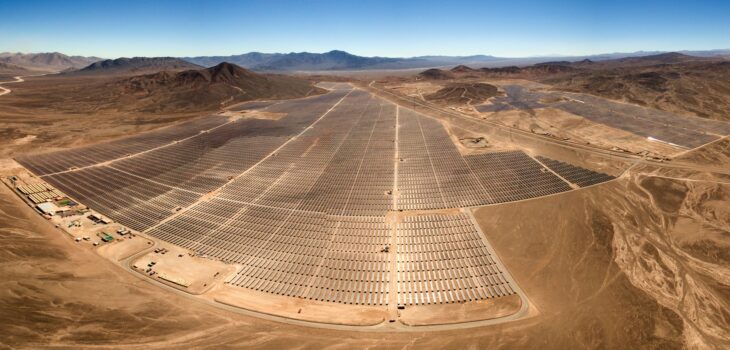
Desert damage: the dark side of solar power
Thousands of acres of solar panels could spring up across California’s Mojave Desert like a crop of crystal mushrooms — a new kind of gold rush meant to bring powerful environmental benefits.
Cutting such a wide swath, however, might also disrupt desert ecosystems and the fragile plants that thrive there.
It’s a concern expressed by some policymakers and scientists, including Darren Sandquist, a Cal State Fullerton biologist with a perspective all his own.
For years, Sandquist has studied the subtle changes wrought across the desert surface by railroads.
Such structures divert runoff into culverts and channels, altering the flow of water across the land. That, in turn, changes both the types of plants in the Mojave as well as where they grow. Similar effects can be expected from large solar array or wind power projects.
“It’s certainly going to damage some of the ecology,” Sandquist said. “I think that’s a tradeoff we have to accept. It’s part of becoming less reliant on oil, and more reliant on solar and wind power.”
Sandquist hopes designers of large solar and wind projects will try to avoid the most harmful effects.
“I think they should take into account how the redistribution of resources in general is going to affect ecosystems,” he said.
The railroad he’s been studying, near Kelso Depot in the Mojave National Preserve, has existed for about a century; he’s been able to track vegetation changes since that time.
Species of plants, plant cover and even the size of plants have been affected. Similar effects can be seen along desert highways.
“Anybody who drives through the desert notices the size of plants,” he said. “Right next to the road, the plants are much larger.”
Such changes are likely to bring shifts in animal populations as well, although Sandquist said measurements of effects on animals in the area are not yet complete.
Not only the effects of roads, but of dust kicked up when desert plants that hold soil in place are cut down to make way for solar arrays could be harmful to the delicate desert ecology.
“Studies have shown the dust on surfaces of leaves significantly reduces the photosynthetic ability of plants,” he said. “Productivity decreases.”
One of his big concerns is something few of us even know exists.
“One of the most important living structures on the surface are biotic crusts,” he said — commonly networks of cyanobacteria and lichens. They can be disrupted or destroyed simply by walking on them.
“They don’t extend more than a few millimeters below the surface,” he said. “Just by being there, they hold the dirt and silt in place.”
Losing them can lead to massive dust storms.
Even minor changes to desert solar projects could protect the variety of organisms that dwell there, he said. Instead of building roads, for example, operators of arrays that require few visits for maintenance might consider buying larger trucks and just driving over the existing plants.
“I really feel like the ecosystem could handle it if they just drove over it every once in awhile,” he said, instead of removing large sections of vegetation to build roads.
GIant solar arrays are a very real possibility in the Mojave. The California Public Utilities Commission estimates that 100,00 to 160,000 desert acres would be needed to meet the state’s goal of increasing renewable energy by 33 percent by 2020. Fourteen solar and five wind projects are being proposed on about 42,000 acres within in a 600,000-acre area known as the former Catellus lands, between the Mojave Preserve and Joshua Tree National Park.
Activist groups are angry, especially the Wildlands Conservancy, which provided $40 million to purchase the lands for preservation. California Sen. Dianne Feinstein recently announced a new effort to preserve all or part of the area by declaring it a national monument.
“Some people would argue that desert organisms are as resilient as they come,” Sandquist said. “But they are vulnerable and sensitive because they are living on the edge _ limited water, very warm temperatures, very cold nights during certain times.”
Reference: PHYS org